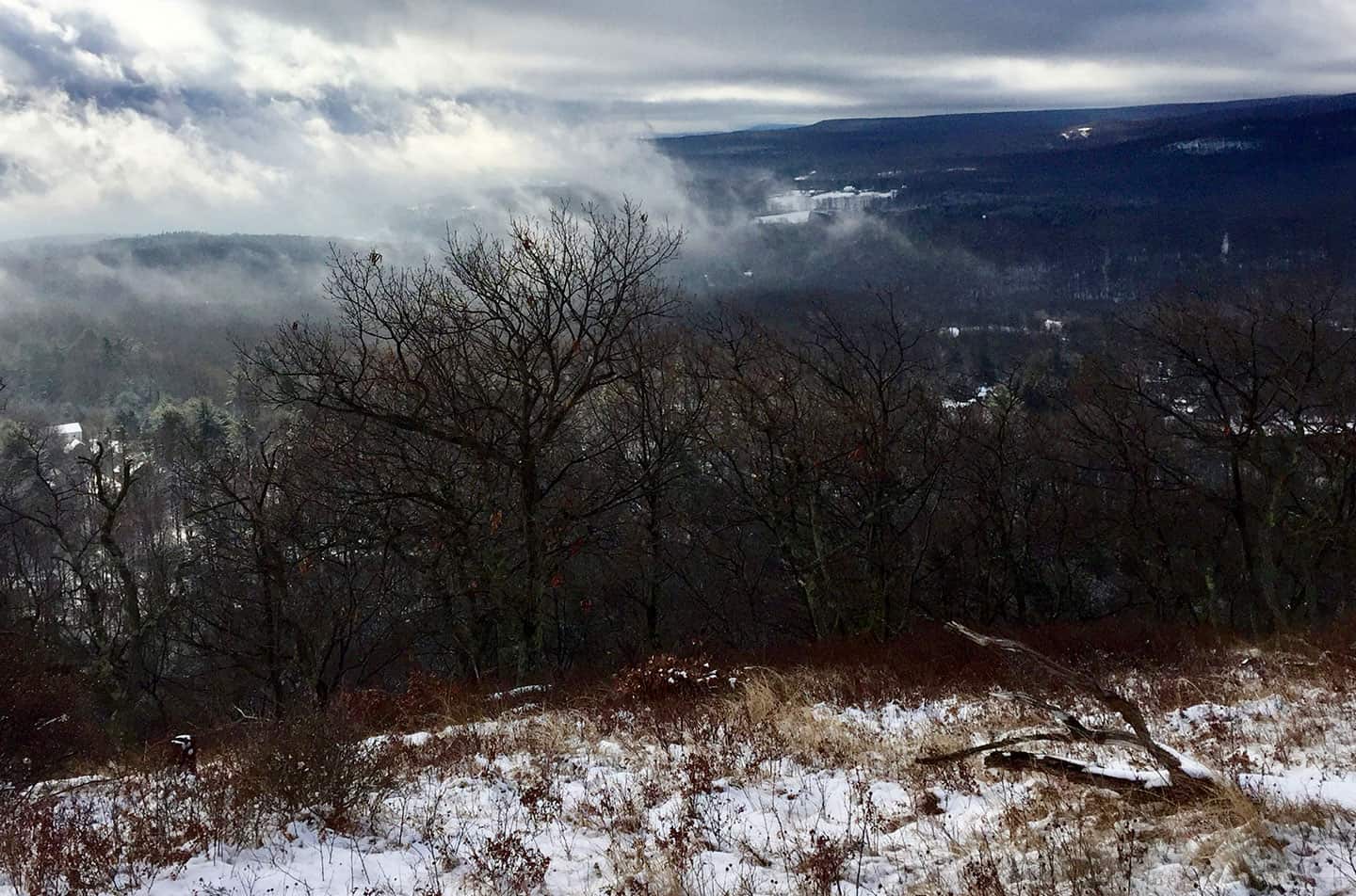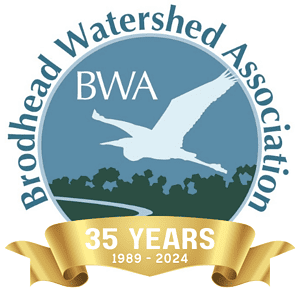

Get Outdoors Poconos: Mount Wismer
Join Brodhead Watershed Association in exploring Mount Wismer with naturalist and Barrett Township Supervisor Darryl Speicher.
This out-and-back hike of about two miles is easier than the climbing route from the nearby Gravel Road trailhead — but it is nevertheless considered strenuous. The trail is often steep and rocky, and at one point there is a tricky descent over a drop of about eight feet. Footing is also often wet. A viewpoint at about 1,600 feet in elevation offers a panorama of the entire Brodhead watershed to the Delaware Water Gap, sweeping from Skytop to the northeast around to Camelback to the southwest.
Conserving forested land such as Mount Wismer in its natural state is one really effective climate action.
That’s because trees are the single most effective way we have of pulling carbon out of the atmosphere. At about 99 tons per acre, Mount Wismer’s 90-acre patch of forest stores nearly 9,000 tons of carbon. Its trees and soil purify air, scrub pollutants from water, hold back floodwaters, protect wild creatures and their habitat, and undergird the balance of nature — all while providing free recreation for all.
To read more about Mount Wismer’s vital role in forest and water conservation, see brodheadwatershed.org/wismer-woods
OUTING ON DEC. 18
WHEN: 10 a.m. to noon Saturday, Dec. 18, 2021. Hike goes “drizzle or shine.”
COST: Free
WHERE: Directions will be provided to registrants.
ABOUT THE PRESERVE: No facilities or trash containers. Wear boots and bring a walking stick and water. Dress for the weather in layers.
REGISTER: Registration is required and limited to 20 participants. To register, click on the “register” button on this page. Deadline to register is 10 a.m. Friday, Dec. 17.
FOR INFORMATION about this and other events in the free Get Outdoors Poconos series, go to www.brodheadwatershed.org/gopoconos. These events spotlight how forested land keeps drinking water safe and abundant. The series is administered by Brodhead Watershed Association and supported by a grant from the William Penn Foundation.
